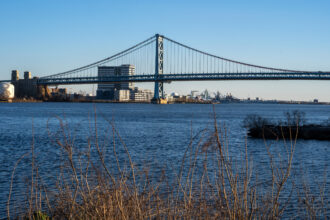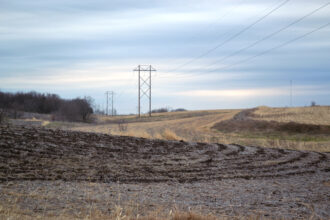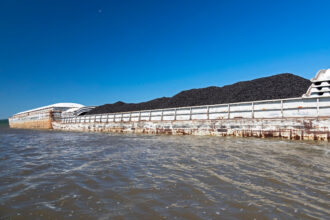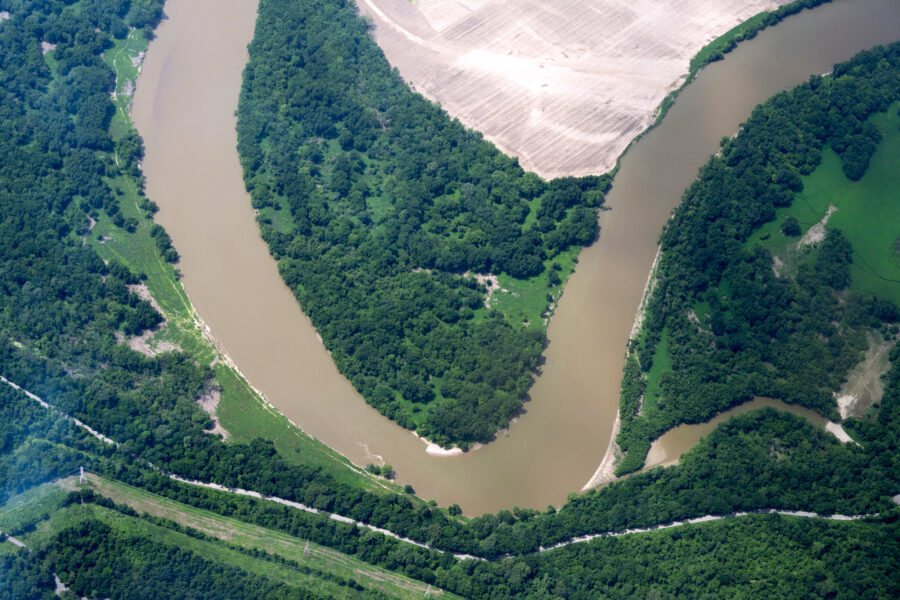The federal government is raising the required oxygen level in an urban stretch of the Delaware River near Philadelphia to improve conditions for fish and humans, but the move faces pushback from wastewater utilities that will have to pay millions of dollars for infrastructure upgrades to comply with the new rule.
In late September, the U.S. Environmental Protection Agency finalized the rule increasing dissolved oxygen requirements in a 38-mile stretch of the river between Philadelphia and Wilmington, where the water was once so polluted that it stopped fish from migrating upstream because it contained almost no oxygen.
Water quality in the urban river has improved since a low point in the mid-20th century, thanks to locally imposed restrictions on the output of nine wastewater treatment plants into the river. But the EPA now says those plants need to make more cuts in the amount of oxygen-consuming ammonia—a component of treated sewage—they discharge into the river so that more oxygen is available for fish.
The EPA’s action is the culmination of years of pressure for a higher standard by environmental groups, which contended that an interstate commission overseeing the Delaware River basin was moving too slowly in its own study of how or whether to increase the amount of oxygen in the water.
The campaign was led by the environmental group Delaware Riverkeeper Network, which argued that the river’s depleted oxygen levels violated the federal Clean Water Act and its goal that all waters should be “fishable and swimmable.” In April 2022, it petitioned the EPA to take control of the oxygen-upgrade process from the Delaware River Basin Commission (DRBC). To the environmentalists’ surprise and delight, the EPA agreed in December 2022 to do so.
That was during the Biden administration. The Trump administration has spent this year rolling back many environmental protections—but this one, it finalized instead.
Now, Delaware Riverkeeper Network, normally an outspoken critic of the Trump administration’s environmental policies, is praising the EPA’s action.
“The new standards are a dramatic improvement for the quality of the Delaware River, aquatic life and the many communities that depend upon a healthy river,” said Maya van Rossum, leader of the environmental group. “We are pleased to see that the EPA allowed their decision to be guided by science.”
The rule, to be implemented starting in November, requires oxygen saturation of at least 66 percent, rising to 74 percent in the latter stage of juvenile fish development from July 1 to Oct. 31. It replaces the previous standard of 3.5 milligrams of oxygen per liter of water, set by the DRBC in 1967. Although the two methods of measuring oxygen are not directly comparable, the new standard represents a higher oxygen requirement, an EPA spokesperson said.
“EPA’s criteria … are more stringent than the previously applicable criteria,” the spokesperson said.
The rule also changes the designated use of the urban river to that of “protection and propagation” of fish populations. The DRBC’s standard required just “maintenance” of those populations. Two endangered species of sturgeon are among the fish found in the Delaware River.
To achieve its goals, the EPA will require wastewater treatment plants to install new technology to remove more ammonia from the treated water they discharge. The agency estimates the total cost for the nine plants to be between $143 million and $185.6 million a year.
But those numbers significantly underestimate the actual costs faced by utilities for complying with the rule, said the Philadelphia Water Department, a city-owned utility whose three treatment plants account for about half the wastewater volume of all nine facilities.
In fact, PWD said, it would have to pay $3.6 billion in capital costs to comply with the rule, and an extra $36 million a year in operation and maintenance. Together, the costs would raise residential water bills by an estimated average of $265 a year, it said.
The EPA rejected PWD’s arguments, saying the utility’s estimates rely on technology that is more expensive than needed to comply with the new rule. The EPA said its estimates are based on proven wastewater plant treatment technologies.
Andy Kricun, former head of the Camden County Municipal Utilities Authority—a New Jersey utility that is affected by the new rule—said residential rates rise by about $4 a year for every $1 million in added costs for that utility. That could mean an increase of about $68 per household in this case: The EPA estimated that CCMUA will have to pay an extra $16.9 million a year to comply with the rule.
PWD also challenged the EPA’s assertion that removing more ammonia from the river would help endangered fish. Citing its own studies, the utility said there is already enough dissolved oxygen in the urban river to support the growth of juvenile sturgeon, some 5,000 of which were collected between 2009 and 2022.
The DRBC, which relinquished its role in the dissolved-oxygen study to the EPA, said the new rule represents a “significant ecological boost” to the urban river, and pledged to continue providing its scientific and modeling expertise to the agency.
The EPA’s action was also praised by David Masur, executive director of the nonprofit PennEnvironment, who said he often differs with the Trump administration on environmental policy but not this time.
“It’s great that EPA approved this commonsense and much-needed proposal to reduce pollution into the Delaware River and help protect a local endangered species,” he said. “While there are numerous policies that the environmental community and the current administration disagree with, it’s reassuring that we can all agree that we want a clean Delaware River with less pollution in it that threatens our health and the health of the local species that make this river their home.”
About This Story
Perhaps you noticed: This story, like all the news we publish, is free to read. That’s because Inside Climate News is a 501c3 nonprofit organization. We do not charge a subscription fee, lock our news behind a paywall, or clutter our website with ads. We make our news on climate and the environment freely available to you and anyone who wants it.
That’s not all. We also share our news for free with scores of other media organizations around the country. Many of them can’t afford to do environmental journalism of their own. We’ve built bureaus from coast to coast to report local stories, collaborate with local newsrooms and co-publish articles so that this vital work is shared as widely as possible.
Two of us launched ICN in 2007. Six years later we earned a Pulitzer Prize for National Reporting, and now we run the oldest and largest dedicated climate newsroom in the nation. We tell the story in all its complexity. We hold polluters accountable. We expose environmental injustice. We debunk misinformation. We scrutinize solutions and inspire action.
Donations from readers like you fund every aspect of what we do. If you don’t already, will you support our ongoing work, our reporting on the biggest crisis facing our planet, and help us reach even more readers in more places?
Please take a moment to make a tax-deductible donation. Every one of them makes a difference.
Thank you,











